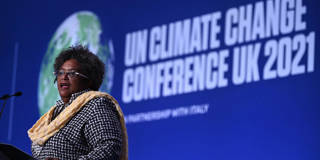One major reason for the highly uneven global economic recovery is the huge variation in fiscal responses between rich countries and the rest of the world. An annual issuance of special drawing rights, the International Monetary Fund’s reserve asset, could help to bring about a more equitable and climate-friendly rebound.
NEW DELHI – The main factor limiting the global recovery is not the much-discussed increase in inflation in advanced economies, which is likely to be transient, but rather the massive inequalities between most rich countries and the rest of the world, with the exception of China. These disparities, by constraining the expansion of global effective demand, keep some poorer economies mired in stagnation, and eventually will affect investors in richer countries as well.
One major reason for the K-shaped global recovery is the huge variation in fiscal responses between rich countries and the rest. Although the COVID-19 pandemic caused government revenues to decline everywhere, the International Monetary Fund estimated in April 2021 that advanced economies had increased their public spending in 2020 by more than 6% of pre-pandemic GDP. Emerging-market economies spent only 1% more on average, and low-income countries actually spent less.
By October 2021, even as fresh waves of COVID-19 infections were causing economic havoc, “fiscal consolidation” was already well underway in many middle- and low-income countries, owing to the rising levels of public debt accrued over the previous two years. This inevitably worsened their economic outlook and prevented even essential public spending on nutrition and health services.

NEW DELHI – The main factor limiting the global recovery is not the much-discussed increase in inflation in advanced economies, which is likely to be transient, but rather the massive inequalities between most rich countries and the rest of the world, with the exception of China. These disparities, by constraining the expansion of global effective demand, keep some poorer economies mired in stagnation, and eventually will affect investors in richer countries as well.
One major reason for the K-shaped global recovery is the huge variation in fiscal responses between rich countries and the rest. Although the COVID-19 pandemic caused government revenues to decline everywhere, the International Monetary Fund estimated in April 2021 that advanced economies had increased their public spending in 2020 by more than 6% of pre-pandemic GDP. Emerging-market economies spent only 1% more on average, and low-income countries actually spent less.
By October 2021, even as fresh waves of COVID-19 infections were causing economic havoc, “fiscal consolidation” was already well underway in many middle- and low-income countries, owing to the rising levels of public debt accrued over the previous two years. This inevitably worsened their economic outlook and prevented even essential public spending on nutrition and health services.